In honor of the 15th anniversary season of Omaha Fashion Week, we decided to sit down with the two designers who have been involved since day one. From warehouse raves in the 90’s, to underground fashion shows in the early 2000’s, and Omaha Fashion Week’s 15-year evolution. Designers, Buf Reynolds and Dan Richters now sit on the Omaha Fashion Week panel, inspiring the next generation of designers.
How did you get into clothing design?
Buf: The first thing I can remember that was fashion related was being in kindergarten. My teacher had a tiny tv on her desk that she would watch when all the kids were napping. I was up one day, not napping and I walked over to see some sort of fashion show. I didn’t know what it was, but I thought, oh that’s neat.
My mom also made our clothes when we were little, and all her sewing stuff sat in this one little area. Then when we grew up, she was too busy to be sitting in front of a sewing machine anymore. In high school, I finally thought, “let me see if it can use that”. We decided to make my homecoming dress for sophomore year, and she did most of the work…let’s be honest, she did it all, I just watched. After that, I just started playing with the sewing machine.
Over time, she showed me how to do all the proper things, as far as she knew how. She didn’t design things, she just followed patterns and sewed them. And for a long time, I was like patterns? Gross. I don’t know how to use those, so I never did.
Dan: I’ve been interested in fashion for a very long time. I was always interested in books, movies, reading, and sci-fi fantasy worlds. I started seeing fashion by people like Mugler and McQueen and it totally captured my imagination. I had these Star Wars action figures; they were doll size, like Luke and Han Solo and I remember making armor for them out of Play-doh and clay.
I would do a lot of drawings too, obviously all my characters had to have interesting outfits and they were mostly fantasy warriors and stuff. So those are my earliest fashion memories. As I got more into art, painting, sculpture, drawing and everything else, I found that fashion is kind of a focal point for all of that. So that’s how I got started thinking about varying textures and interesting things that I liked and being inspired by those designers.
It’s interesting that you say you didn’t like using patterns. I feel like today, people are starting their design journeys with upcycling without patterns. Do you have any advice for young designers in regards to patterns?
Buf: Upcycling is a really great way to learn how a garment comes together. If you’re deconstructing something, you’re also learning how it was constructed. Once you take apart a sleeve and you see the shape, its mind blowing! Before you think, it’s just a tube. Once you see the inside, you realize there’s so much more thought put into the movement of fabric, how it’s going to function, where fabric is going to bunch and you end up learning how to sew it from there.
That being said, it’s really important to start reading. Get old patterns, they cost a dime at the thrift store, and just start reading the directions. Learn how a piece comes together, start knowing the terms like what the grain of the fabric is, what a salvage is, what a knit is, and all of those things. Looking back, they would have been super valuable in the beginning instead of just learning trial by fire.
What does your design process look like and how has it changed over time?
Dan: It is interesting to think about it changing over time, because it’s been such a long process. When I started designing, I was constantly thinking “Oh my gosh, can my models even sit down in these?” Now it’s a given that they’re functional too. I think about, if its comfortable and how will this make the wearer feel. That’s been a journey to understand, while still having in mind what I want artistically and getting there. Every collection I do something new and there’s a new set of challenges. It’s like solving engineering problems.
I like when you can tell the life of the piece is coming from the wearer and the dress isn’t wearing them. I want the dress to move with the body, not the other way around. That’s how I developed my materials and processes and how I discovered working with silicon, mesh, and other stretchy materials. Even the things I want to look hard and unmoving, like spikes and plates, they’re all made so that they look hard, but are actually rubbery, stretchy, and have a lot to give to them.
On top of that, I’m interested in the contrast of colors and textures. The nice thing about silicone is that it’s a liquid that turns solid. I could look at this table and think, “I love that geometric pattern on this table. That could be a fabric for my dress.” I would essentially use this table as a mold, put a thin layer of silicone on top of that, put on a mesh backing, peel that up, and there you go. Then I discovered that I could make my own prints by actually drawing and painting them. My most recent thing is painting the dress on the form itself with a very thin silicon and that’s pretty amazing because it cuts out some steps.

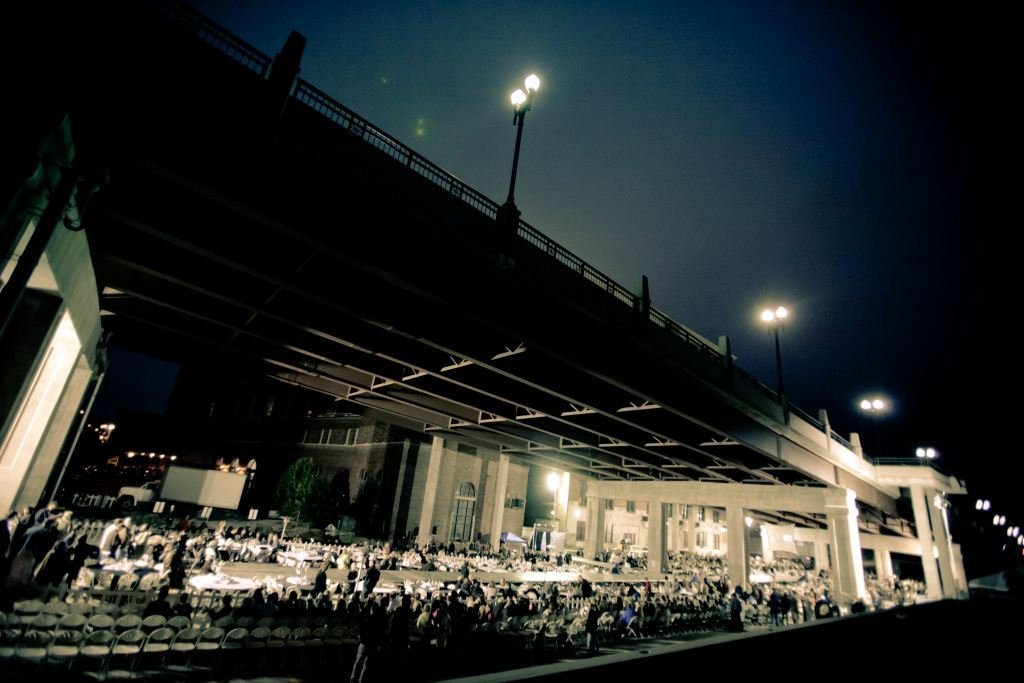
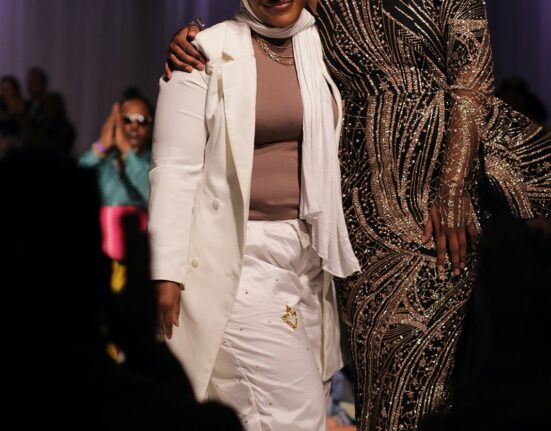
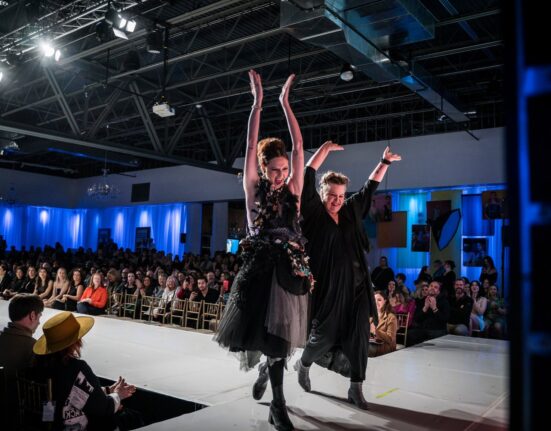

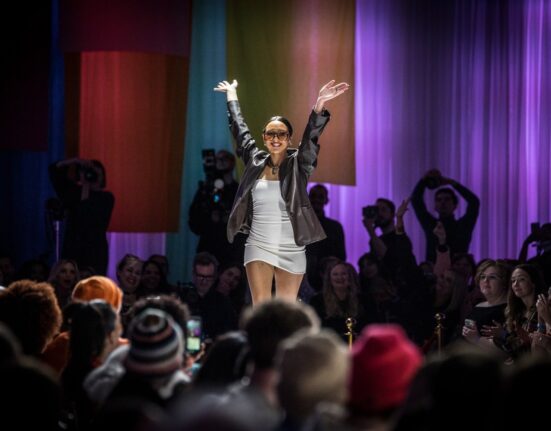
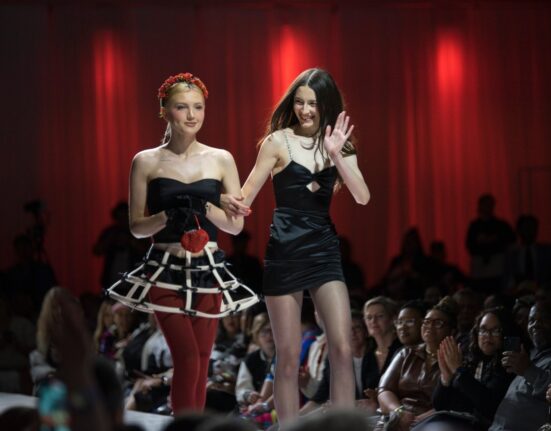
Leave feedback about this